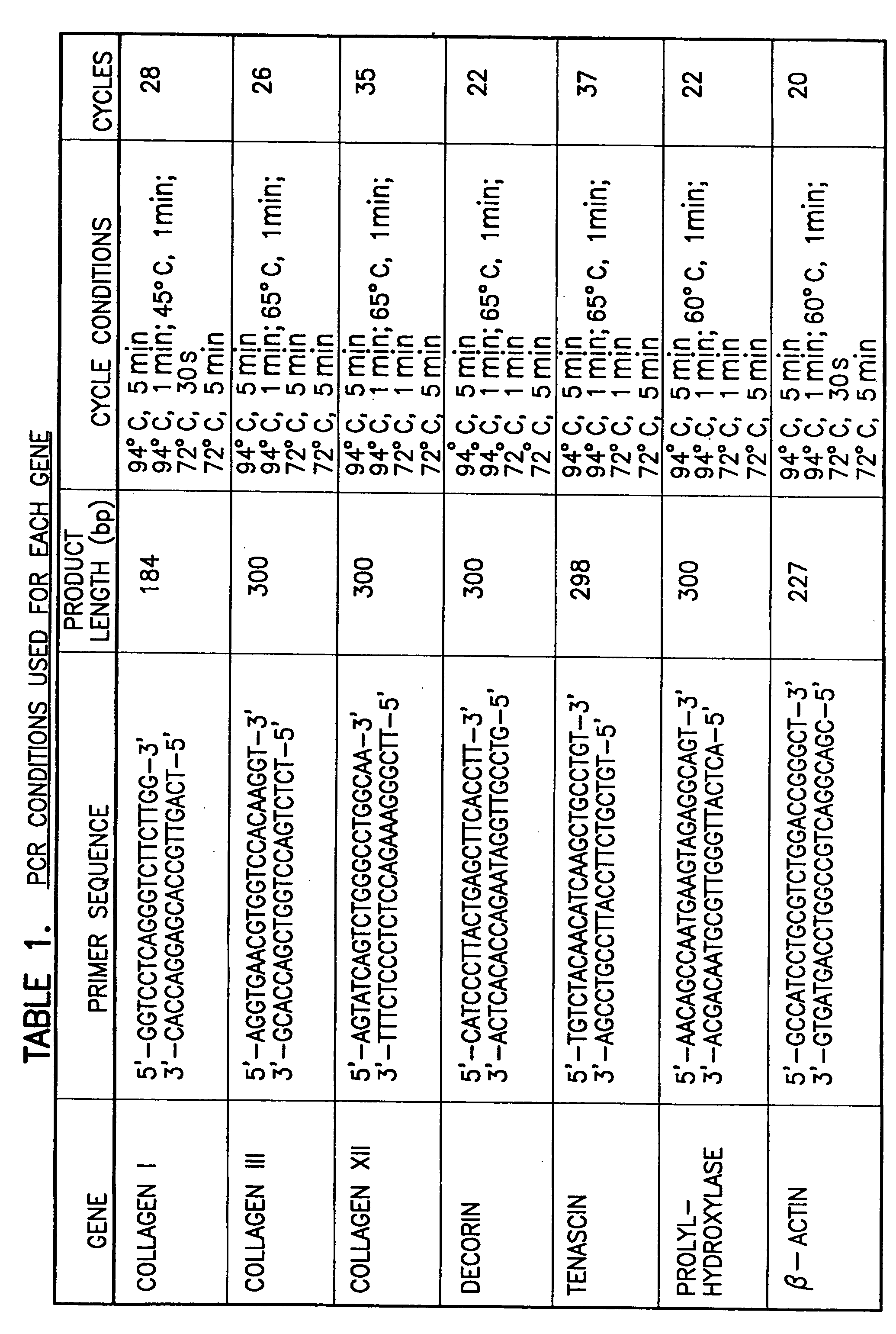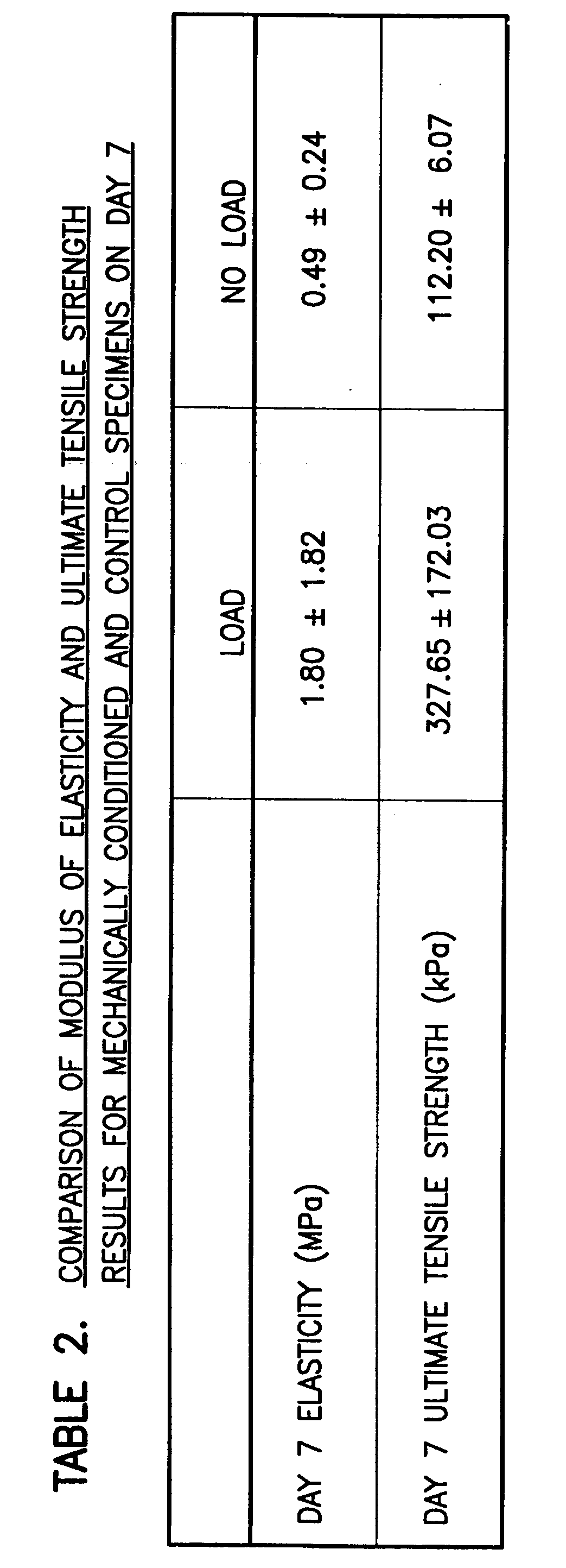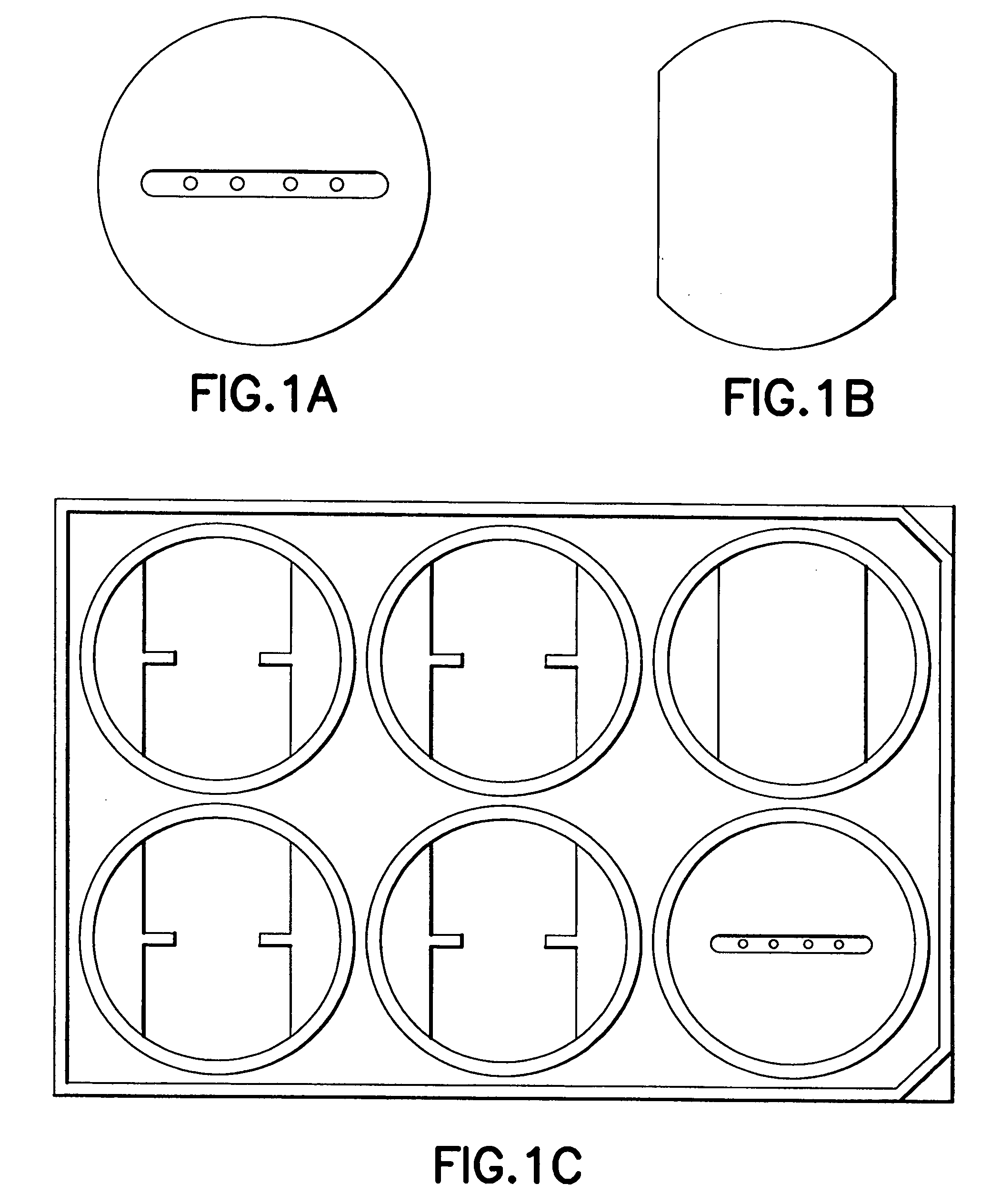Modulation of cell intrinsic strain to control cell modulus, matrix synthesis, secretion, organization, material properties and remodeling of tissue engineered constructs
a technology of intrinsic strain and cell, which is applied in the field of cell intrinsic strain to control cell modulus, matrix synthesis, secretion, organization, material properties and remodeling of tissue engineered constructs, can solve the problems of stress shielding in natural tissue, permanent alteration of mechanical strength and structural characteristics of host tissue, and need for additional surgery. to achieve the effect of reducing expression
- Summary
- Abstract
- Description
- Claims
- Application Information
AI Technical Summary
Benefits of technology
Problems solved by technology
Method used
Image
Examples
example 1
Bioartificial Tendons and Application of Mechanical Load
1. Introduction
[0062] Natural material such as fibrillar collagen can act as a scaffold allowing cells to integrate it into host tissue. This material can be formulated to approximate the host tissue's collagen type (generally type I collagen) and material properties and is minimally antigenic. Additionally, it would be advantageous to use a material seeded with native tendon cells because it is these cells that are responsible for normal tissue maintenance, remodeling and metabolism. Together, these ideas are the basis for the hypothesis that mechanically conditioned tendon internal fibroblasts, grown in a tethered, three-dimensional collagenous matrix, can mimic native tendon in appearance, genetic expression and biomechanical properties to create a bioartificial tendon using native tendon cells in a molded, Type I collagen matrix which can be subjected to a mechanical loading regimen.
2. Methods
Cell Culture
[0063] Avia...
example 2
Elasticity of Human Tenocyte-Populated Bioartificial Tendons (BATs™) Increased with IL-1
1. Introduction
[0094] In order to find a better therapeutic method for tendon / ligament repair and / or replacement, several in vitro models for engineered tendon have been developed recently (Awad et al., J. Biomed. Mater Res., 51(2), 233-240, 2000). One of them is a BioArtificial Tendon (BAT™) model system utilizing tenocyte-populated molded collagen gels (Awad et al., J. Biomed. Mater Res., 51(2), 233-240, 2000). This 3D BAT™ system allows the testing of tenocyte responses to drugs, cytokines and mechanical loading but is too weak to replace conventional grafts materials. In an attempt to modulate the material properties of the cell-gel composite, the influence of IL-1β on the elasticity of human tendon internal fibroblast (HTIF)-populated bioartificial tendons (BATs™) was investigated. IL-1β has been reported to increase the expression of matrix metalloproteinases (MMPs) and elastin. It was h...
example 3
IL-1β Reduction of the Modulus of Human Tendon Internal Fibroblasts
1. Introduction
[0098] It has been reported that IL-1β can regulate the elasticity of human tendon internal fibroblast (HTIF) populated bioartificial tendons (BATs™) by down-regulating Collagen type I expression and up-regulating elastin expression (Qi, J. et al., ORS, San Francisco, Calif., 2004). The measurement of material properties showed that IL-1β reduced the modulus of BATs™. To address the mechanism, the effects of IL-1β on the expression levels of Collagen type I and elastin at both message and protein levels were investigated. The results showed that IL-1β decreased the expression of Collagen type I, but increased elastin expression. Both extracellular matrix protein and cells contribute to the mechanical properties of BATs™, and it was reported that cytochalasin D decreased cell modulus by up to three fold (Wu, H. W. et al., Scanning, 20, 389-397, 1998). Therefore, it was hypothesized that IL-1β would r...
PUM
 Login to View More
Login to View More Abstract
Description
Claims
Application Information
 Login to View More
Login to View More - R&D
- Intellectual Property
- Life Sciences
- Materials
- Tech Scout
- Unparalleled Data Quality
- Higher Quality Content
- 60% Fewer Hallucinations
Browse by: Latest US Patents, China's latest patents, Technical Efficacy Thesaurus, Application Domain, Technology Topic, Popular Technical Reports.
© 2025 PatSnap. All rights reserved.Legal|Privacy policy|Modern Slavery Act Transparency Statement|Sitemap|About US| Contact US: help@patsnap.com



